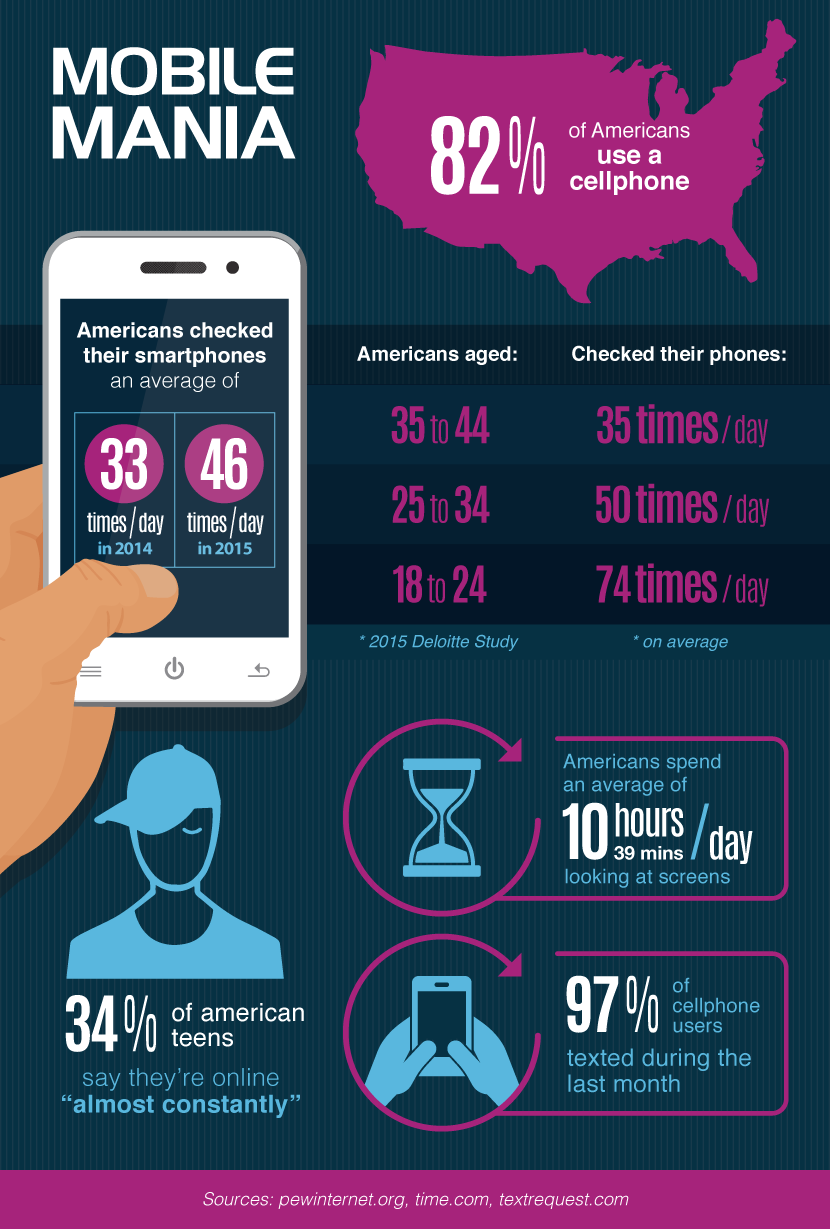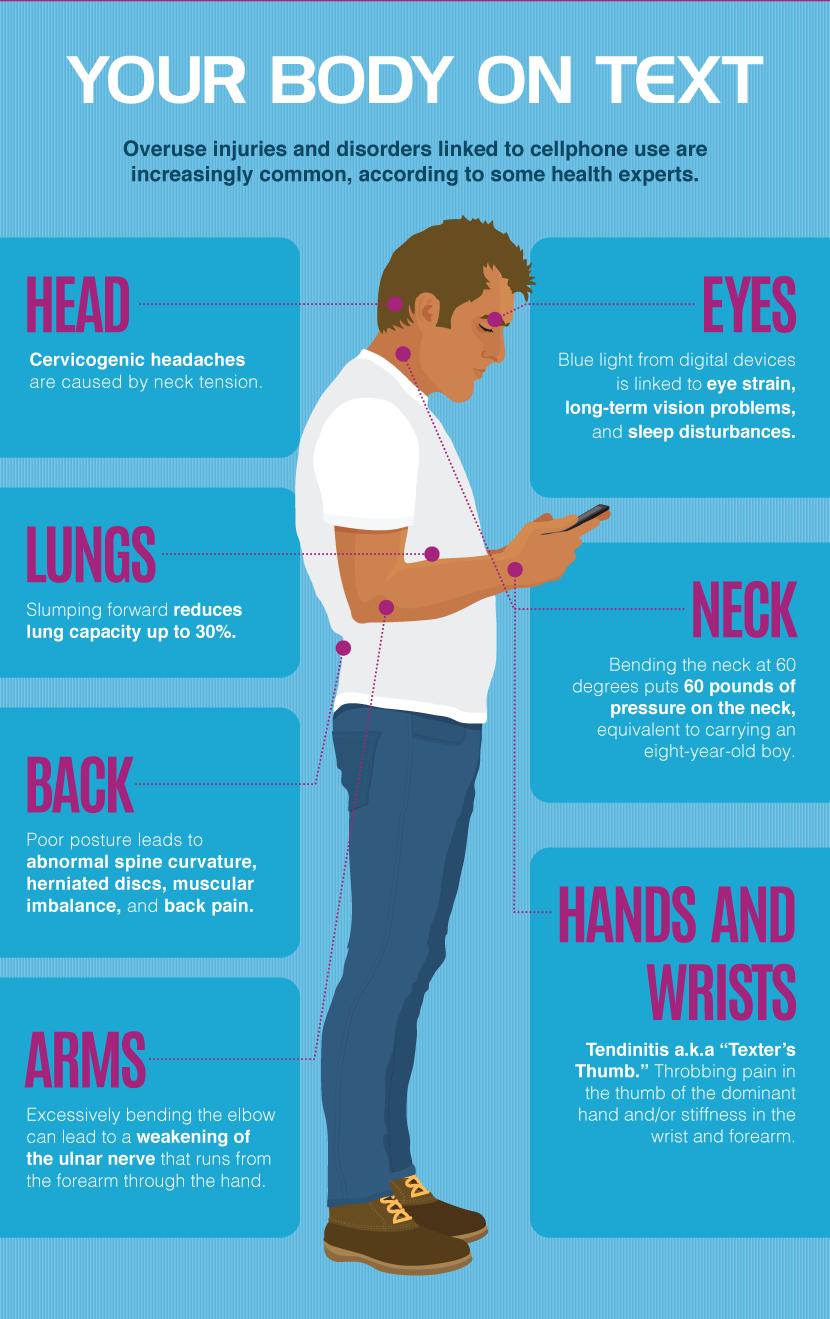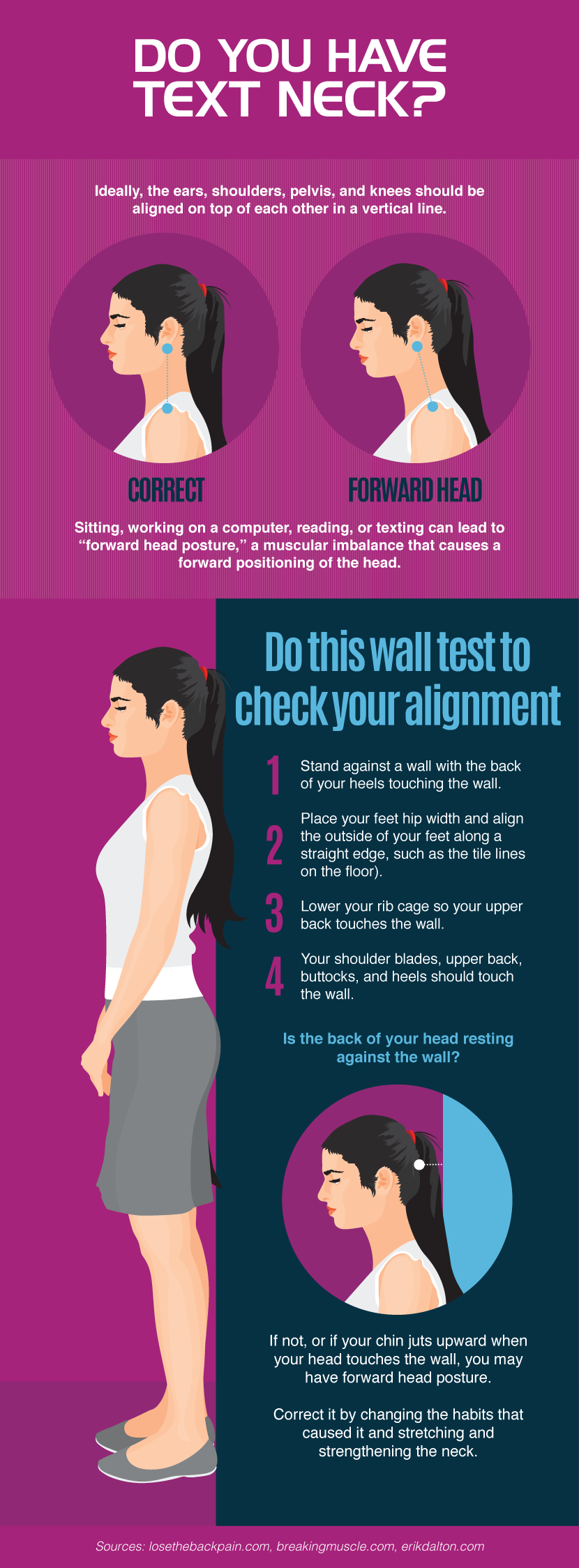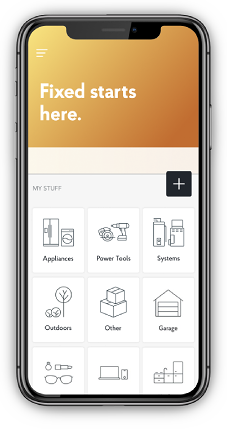Prevent Text Neck
We may love our mobile devices, but our necks and spines don’t. Worldwide, people spend an increasingly large portion of every day hunched over their devices texting, emailing, scrolling, and surfing. You may be spending more time looking at your phone than you think. A group of college-aged U.S. students in one study spent five hours a day using their smartphones, a third of their waking hours and nearly twice the amount of time they’d estimated.
Experts warn that too much time on mobile devices can spell big trouble for our bodies. Keep reading to learn about an increasingly common and potentially painful ailment known as “text neck,” and how to prevent or correct it.

The Trouble with Texting
The amount of time we spend on mobile devices is part of a larger problem, which is sedentary living. A body of research suggests we weren’t designed to stay still for long periods. However, most of us move very little – 80 percent of Americans don’t get the moderate amount of physical activity recommended by the government (which is equivalent to five 30-minute walks a week).
Our bodies suffer when we stay in the same position for long periods, whether that position is sitting in front of a television, working at a computer, or reading. Staring at a phone at waist height may be particularly damaging. Research conducted by Kenneth K. Hansraj, chief of spinal surgery at New York Spine Surgery and Rehabilitation, suggests that holding the weight of the 10-pound head in front of the body puts an extreme amount of pressure on the neck. According to Hansraj, bending the neck at 45 degrees, as many people do when they’re texting, is like holding a 49-pound child.
Many of our bodies are suffering. Nearly a third of Americans are inflicted with chronic pain. More than half of American workers in a large survey reported having had a headache, back pain, arthritis, or other musculoskeletal pain in the two weeks prior. We’ve come to accept tension headaches, tight and painful necks and shoulders, lower back pain, and other musculoskeletal issues as normal, but we may be able to prevent many of these issues by being more mindful about how we’re moving (or not moving).

Developing Mobile Mindfulness
If you’ve ever glanced down at your phone then looked back up an hour later, you’re hardly alone. Mobile devices give us instant access to our friends and the larger world, and they’re captivating and addictive. But if you want to prevent or correct musculoskeletal issues, the first step is being more aware of how you’re moving, and that means you need to be aware of how you’re using a device in the first place.
Try these strategies to become more mindful about your use of mobile devices:

Moving Better, Feeling Better
Once you’re more aware of when and how often you’re using your devices, use these ergonomic strategies to reduce the strain on your body:
Correcting the Damage
Our technology may be new, but sedentary work is not. The ancient movement practices of yoga and qigong were developed to help people sit for long periods (in meditation) without pain. These practices help build awareness, strength, and flexibility, and emphasize proper alignment. They may help correct and prevent the damage from using mobile devices. If a movement practice such as yoga doesn’t appeal to you, simple exercises may help strengthen the neck and reset the body’s natural alignment.

Mobile devices aren’t going anywhere (and most people wouldn’t want them to), but it may be time to change the way you use them to improve your health, mobility, and vitality.
- http://journals.plos.org/plosone/article?id=10.1371/journal.pone.0139004
- http://www.latimes.com/science/sciencenow/la-sci-sn-get-up-20140731-story.html
- http://www.cbsnews.com/news/cdc-80-percent-of-american-adults-dont-get-recommended-exercise
- https://www.phschiropractic.com/webres/File/iTrac%20Surgical%20Technology%20Doc.pdf
- http://www.webmd.com/pain-management/news/20110629/100-million-americans-have-chronic-pain#1
- http://www.painmed.org/patientcenter/facts_on_pain.aspx
- http://www.qigonginstitute.org/category/30/yoga-and-qigong
- http://www.qigonghealing.com/qigong/qigong.html
Embed the article on your site

























































